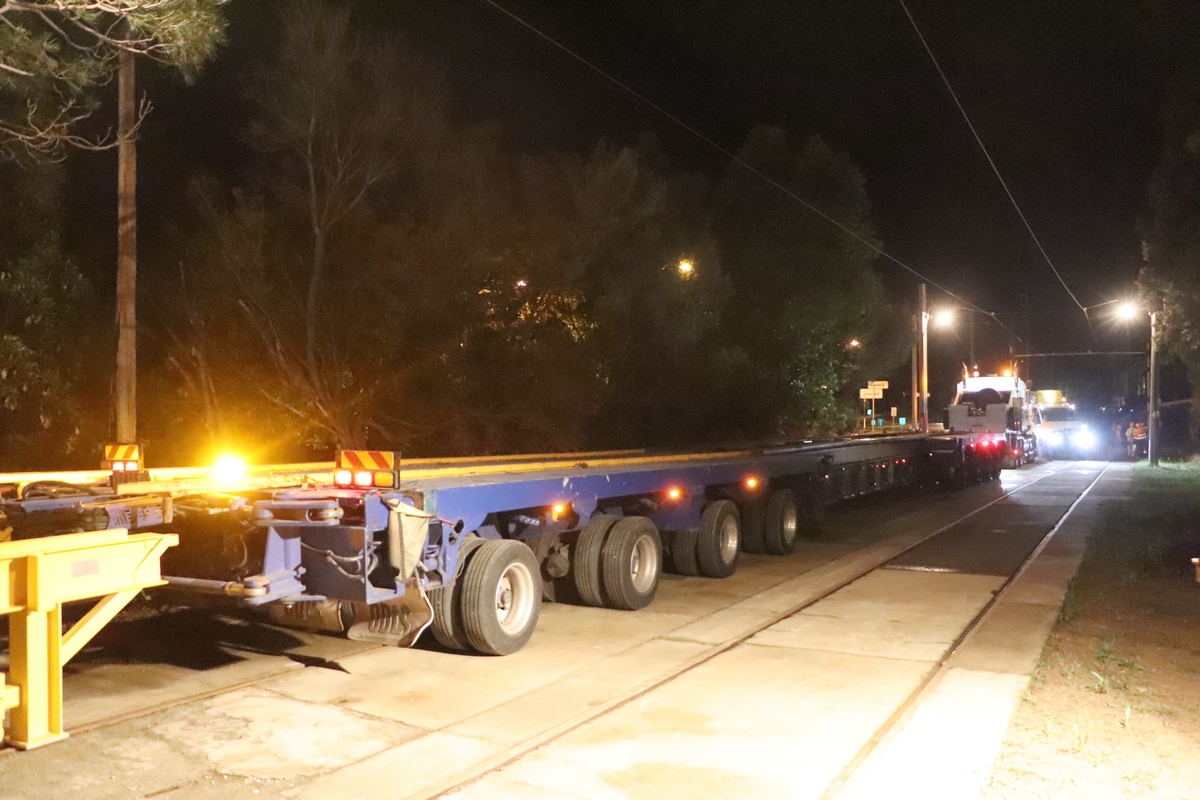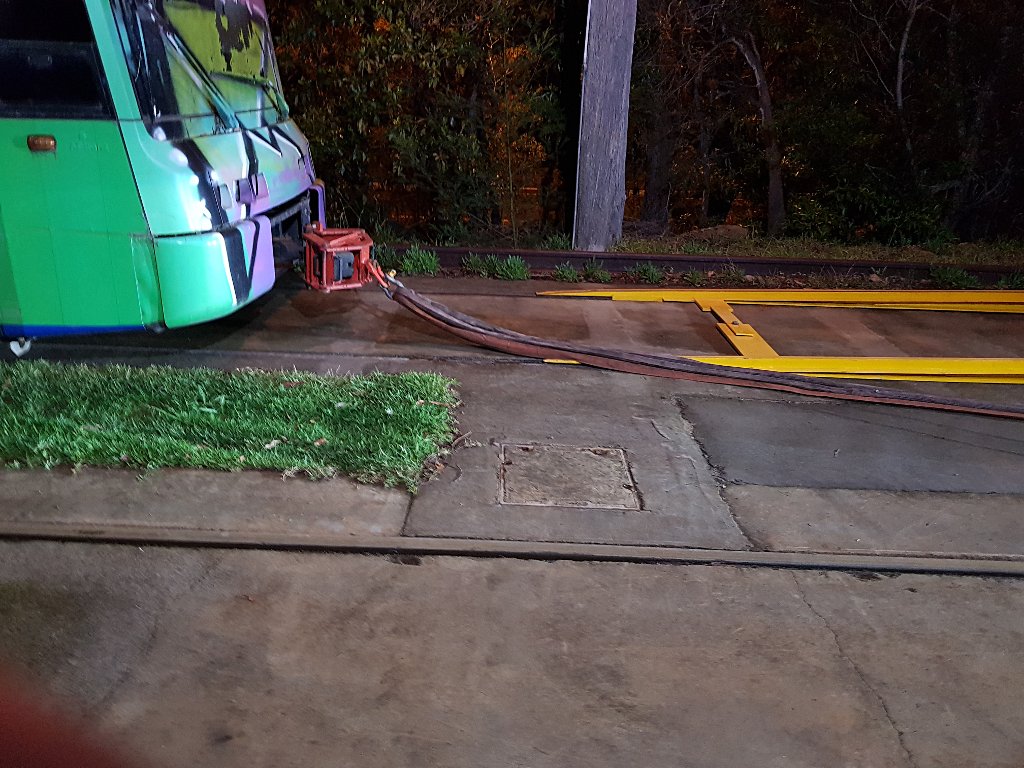Over the night of the 10/11th of October 2018, 1997-built Adtranz Variotram 2107 was delivered to Loftus, touching down at approx
This is the culmination of over 3 years work for the museum and Transport Heritage NSW. 2107 remains the property of the state of NSW, with the museum ‘caring’ for the tram on behalf of Transport Heritage NSW. This will be the first item at the museum under this sort of arrangement. (The society owns outright most of the rest of the collection).
Once all the paperwork was sorted the final hurdle was the RMS, the delivery being delayed 7 weeks due to lack of RMS permits for the oversized load.
This was all eventually solved, and the largest exhibit ever for Loftus has arrived.


2107 being backed down Rawson Ave. 
Guiding the trailer onto the tracks. 
Backing up to the ramp 
Linking the trailer to the ramp. 

Down the ramp the tram rolls. 
The big trailer detached from the ramp and ready to go. 
2107 on the museum tracks at last.
Photos by Peter Mudie and Martin Pinches
Come daylight and after the movers had disassembled and removed their ramp, and after some electrical safety tests, power was applied to 2107 and after 3 1/2 years in outdoor storage, the systems all powered up and 2107 was driven into the museum and into the depot under its OWN power. There are faults that need attending to, but key systems worked and the
The haul from Penrith was covered by Phil from ‘Sydney Trains Vlogs’ which can be seen below:
Other preserved low floor trams
2107 is not the first low floor articulated tram to be in a museum – two museums in Germany have low floor prototypes in their collections.
Dusseldorf’s Rheinbahn has a Düwag low floor prototype, Tw3601 built in 1991, the last of 3 built to test the idea of a low floor tram on 3 networks. It was considered a failure due to frequent derailments in Dusseldorf and all were returned to the manufacturer without entering regular service. The Düsseldorf railcar 3601 returned in 2002 to the Rheinbahn and is now in their collection. Tw3601 is not operable.
Bremen acquired MAN prototype 801, originally delivered to Bremen in February 1990 for preservation in 2011, this vehicle is the forerunner of the GT6n/m GT8n/m series of low floor trams used extensively all over Germany. The design could be considered successful, unlike the earlier Düwag attempt as it formed the basis of a widely purchased tram type. The prototype had run in Bremen, then was sold to Norrköping in Sweden. The Bremen museum repatriated it 2011. Tw801 is not operational.
Sydney may be able to claim the first ‘production’ model low floor in preservation, and the first in operating condition.
Footnote – 29th October 2018
We have since managed to download and decode 2107’s event log, which amazingly had retained its memory for 3 years, 3 months, 22 days, way in excess of the documented hold time for that memory – that was the time from the last entry in the log back in June 2015 till the entry recording the power up at Loftus. There are two computers on board that back each other up – only one of the two still had valid event data.
It’s hard to tell, but it looks like 2107 was last used on the 27/05/15, running in just after midnight.




Brilliant achievement! Congratulations!
Now, how about something iconically “Sydney”?
The E class?
Congratulations to all involved. Preservation is of the past, but the past can be only yesterday!
Great to Have a Variotram at loftus. I’ve been on one of those trams on the Central- Lilyfield line when I was a Kid. And I’ve been on my last ride with one of the Vario trams from Taveners Hill to Casino when I was a Teenager. But I’m hoping to travel on the Vario tram next year. A great effort to preserve the Variotram, Well Done!